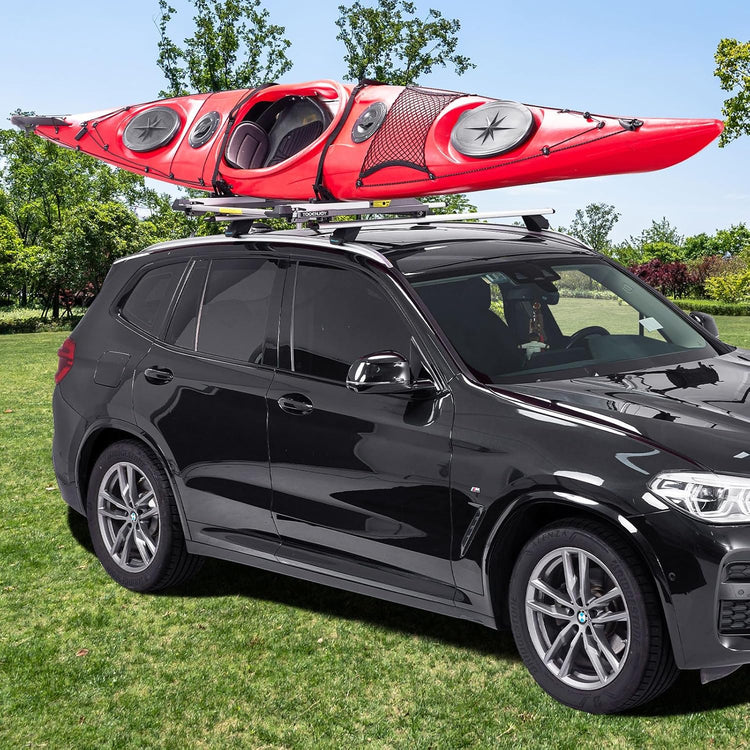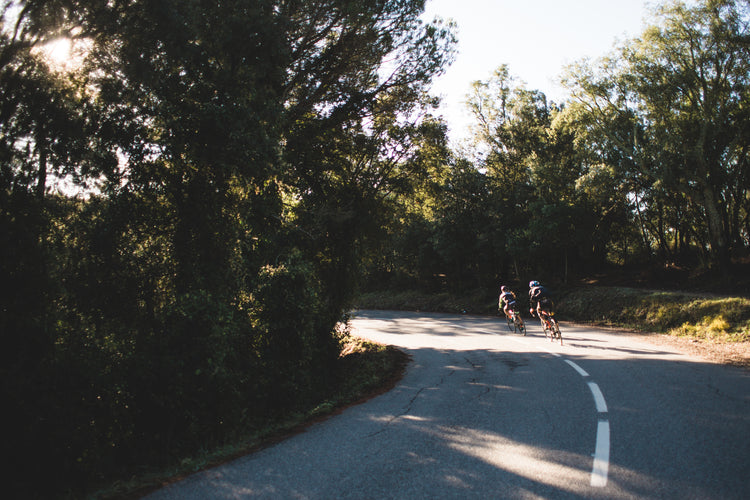Key Takeaway
Proper preparation is the cornerstone of a successful kayaking trip. From selecting the right gear and safety equipment to planning your route and packing essentials, thorough preparation ensures both safety and enjoyment on the water. Whether you're a beginner or experienced paddler, having the right equipment – including reliable transportation solutions like a quality kayak rack system – and following a comprehensive preparation checklist will transform your kayaking experience from good to extraordinary.
Kayaking offers an incredible way to explore nature, get exercise, and create lasting memories on the water. However, the difference between a fantastic trip and a potentially dangerous or disappointing experience often comes down to one crucial factor: preparation.
Whether you're planning a peaceful paddle on a calm lake or an adventurous journey down a flowing river, knowing how to prepare for your kayaking trip is essential for both safety and enjoyment.
Understanding the Importance of Kayaking Preparation
Before diving into the specifics of preparation, it's important to understand why thorough planning matters so much in kayaking. Unlike many other outdoor activities, kayaking puts you in direct contact with water environments that can change rapidly and present unique challenges. Proper preparation helps you anticipate and address potential issues before they become serious problems.
Experienced kayakers know that preparation extends far beyond simply showing up with a paddle and a kayak. It involves careful consideration of weather conditions, water levels, personal skill levels, safety equipment, and logistical factors like transportation and storage of your gear.
Essential Gear and Equipment for Your Kayaking Adventure
Safety Equipment: Your First Priority
Safety should always be your top priority when preparing for any kayaking trip. The right safety equipment can literally be the difference between life and death in emergency situations.
Personal Flotation Device (PFD)
Your PFD is arguably the most important piece of safety equipment you'll carry. Choose a Coast Guard-approved life jacket that fits snugly but allows for comfortable arm movement. Many modern kayaking PFDs are designed specifically for paddling, featuring shorter fronts that won't interfere with your spray skirt and multiple pockets for essential items.
Communication and Signaling Devices
Always carry at least one reliable communication device. A waterproof VHF radio is ideal for coastal paddling, while a satellite communicator or personal locator beacon provides peace of mind for remote adventures. Don't forget traditional signaling devices like a whistle and mirror.
First Aid Kit
Pack a comprehensive, waterproof first aid kit appropriate for the duration and remoteness of your trip. Include basics like bandages, antiseptic, pain relievers, and any personal medications. For longer trips, consider adding items like wound closure strips, elastic bandages, and emergency medications.
Transportation and Storage Solutions
Getting your kayak safely to and from your launch point is a crucial part of trip preparation. Quality kayak transportation equipment can make the difference between a smooth start to your adventure and a frustrating struggle with inadequate gear.
Proper kayak racks not only protect your investment but also ensure safe transport for yourself and other drivers on the road. Look for solutions that offer both security and ease of use, especially if you'll be loading and unloading your kayak frequently.
Paddling Equipment and Accessories
Paddles
Always carry at least one spare paddle. Choose paddles appropriate for your paddling style and the conditions you'll encounter. Shorter, wider blades work well for recreational paddling and provide more power, while longer, narrower blades are better for efficiency during long-distance touring.
Dry Bags and Storage
Waterproof storage is essential for protecting your gear, food, and electronics. Invest in quality dry bags in various sizes, and consider a deck bag for items you'll need easy access to while paddling.
Planning Your Route and Timing
Researching Your Destination
Successful kayaking trips begin with thorough research of your intended destination. Study maps, read recent trip reports, and check with local authorities or outfitters for current conditions and any restrictions.
Water Conditions and Hazards
Understanding the water you'll be paddling is crucial. Research typical flow rates, seasonal variations, potential hazards like rapids or tidal currents, and emergency takeout points. Many regions have online resources or apps that provide real-time water level and flow information.
Weather Patterns
Weather can change rapidly and dramatically affect kayaking conditions. Check extended forecasts and understand how different weather patterns might impact your planned route. Wind, in particular, can turn a pleasant paddle into a challenging ordeal.
Timing Considerations
Seasonal Factors
Different seasons present unique opportunities and challenges for kayaking. Spring often brings high water levels and unpredictable weather, while summer offers stable conditions but potentially crowded waterways. Fall can provide beautiful scenery and comfortable temperatures, while winter paddling requires specialized gear and experience.
Daily Schedule Planning
Plan your daily schedule with realistic expectations about distance and time. Factor in breaks, meal stops, and potential delays due to weather or other circumstances. A good rule of thumb for beginners is to plan for 2-3 miles per hour of actual paddling time, plus additional time for stops and unexpected situations.
Physical and Mental Preparation
Building Physical Fitness
Kayaking is a full-body workout that primarily engages your core, back, and arm muscles. While you don't need to be an elite athlete to enjoy kayaking, basic fitness will enhance your experience and reduce fatigue.
Specific Training Exercises
Focus on exercises that mimic paddling motions and build core strength. Swimming is excellent cross-training for kayaking, as it builds the same muscle groups and improves your comfort in water. Yoga can improve flexibility and core strength while helping with the mental focus needed for longer paddling sessions.
Gradual Skill Building
If you're new to kayaking or returning after a long break, start with shorter, easier trips and gradually work up to more challenging adventures. Practice essential skills like wet exits, self-rescue techniques, and efficient paddling strokes in controlled environments before heading out on longer trips.
Mental Preparation and Risk Assessment
Kayaking requires good judgment and the ability to make quick decisions under pressure. Develop your risk assessment skills by honestly evaluating your abilities, the conditions you'll encounter, and your group's overall skill level.
Emergency Planning
Always have a plan for what to do if things go wrong. Know your exit points, understand the signs of hypothermia and heat exhaustion, and practice rescue scenarios. Make sure someone onshore knows your planned route and expected return time.
Food, Water, and Nutrition Planning
Hydration Strategies
Staying properly hydrated is crucial during kayaking trips, especially in hot weather or during strenuous paddling. Plan to drink water regularly throughout your trip, not just when you feel thirsty.
Water Purification
For longer trips where you'll need to source water along the way, carry reliable water purification methods. Options include water purification tablets, UV sterilizers, or portable water filters designed for backcountry use.
Meal Planning and Food Storage
Energy-Dense Foods
Choose foods that provide sustained energy and pack well in waterproof containers. Trail mix, energy bars, dried fruits, and jerky are excellent options for snacks during the day. For longer trips, consider dehydrated meals that only require hot water.
Food Safety
Proper food storage becomes even more critical in the marine environment. Use approved bear-proof containers in areas with wildlife, and always pack out all food waste to protect the environment and wildlife.
Pre-Trip Checklist and Final Preparations
Equipment Check
Create a comprehensive checklist of all your gear and check each item before your trip. Test electronic devices, inspect your kayak for damage, and ensure all safety equipment is in good working order.
Essential Items Checklist:
-
Personal flotation device (properly fitted)
-
Helmet (if required for conditions)
-
Paddle and spare paddle
-
Dry bags for gear storage
-
First aid kit
-
Communication device
-
Navigation tools (map, compass, GPS)
-
Sun protection (sunscreen, hat, sunglasses)
-
Weather-appropriate clothing
-
Food and water for the duration
-
Emergency shelter or space blanket
Weather and Conditions Final Check
Check weather conditions and water levels one final time before departing. Be prepared to postpone or modify your trip if conditions have deteriorated or are forecast to become dangerous.
Communication Plan
Establish a clear communication plan with someone who will remain onshore. Provide them with your detailed itinerary, expected check-in times, and emergency contact information. Stick to this plan and make contact as scheduled to avoid unnecessary search and rescue responses.
Frequently Asked Questions
What should I do if I've never kayaked before?
If you're completely new to kayaking, consider taking a basic kayaking course or hiring a guide for your first few trips. Many outfitters offer beginner-friendly instruction that covers paddling techniques, safety procedures, and equipment use. Start with calm, protected waters and gradually work up to more challenging conditions as your skills improve.
How do I know what size kayak I need?
Kayak size depends on several factors including your height, weight, intended use, and personal preferences. Generally, longer kayaks track better and move faster through the water, while shorter kayaks are more maneuverable. For recreational paddling, most adults will be comfortable in kayaks between 10-14 feet long. When in doubt, consult with local paddle shops or rental facilities.
What should I wear for kayaking?
Dress for the water temperature, not the air temperature, as hypothermia is a real risk if you end up in the water. In cold conditions, wear synthetic or wool base layers and avoid cotton. Quick-dry pants and shirts work well in warmer weather. Always protect yourself from sun exposure with long sleeves, a hat, and sunscreen.
How much should I expect to spend on kayaking gear?
The cost of kayaking gear varies widely depending on quality and intended use. A basic recreational setup including kayak, paddle, and PFD might cost $800-1500, while high-end touring or whitewater setups can cost several thousand dollars. Many people start with rented or used equipment to determine their preferences before making major purchases.
Is kayaking safe for children?
Kayaking can be safe for children when proper precautions are taken. Children should always wear properly fitted PFDs, stay close to adults, and paddle in calm, protected waters. Many families enjoy tandem kayaking, where an adult and child paddle together in the same boat. Age-appropriate instruction and gradual skill building are essential.
Conclusion and Next Steps
Preparing for your kayaking trip requires attention to detail, honest assessment of your skills and conditions, and investment in proper equipment and planning. The time and effort you put into preparation will pay dividends in safety, comfort, and enjoyment on the water.
Remember that preparation is an ongoing process that improves with experience. Each trip offers opportunities to learn and refine your preparation process. Keep detailed notes about what works well and what could be improved for future adventures.
Whether you're planning a peaceful afternoon paddle or a multi-day wilderness adventure, thorough preparation sets the foundation for incredible experiences and lifelong memories. The investment in proper gear, including reliable transportation solutions, safety equipment, and careful planning will enhance every aspect of your time on the water.
Start with shorter, easier trips to build your skills and confidence, and gradually work up to more ambitious adventures as your experience grows. Most importantly, remember that the goal is to have fun while staying safe – proper preparation makes both possible.
Ready to start planning your next kayaking adventure? Begin with this comprehensive preparation guide, and don't forget to invest in quality gear that will serve you well for years of paddling adventures ahead.

